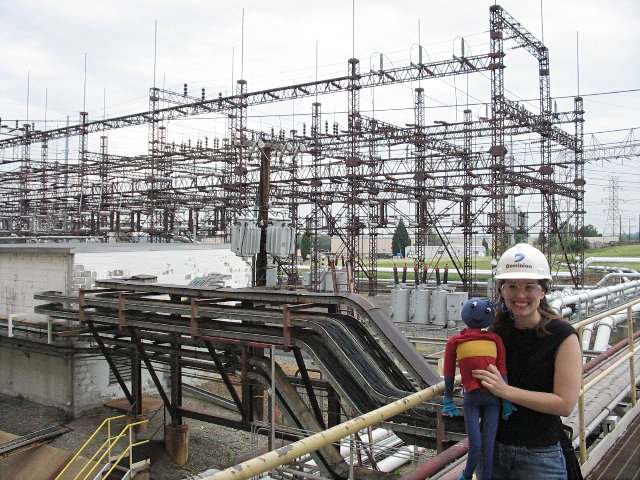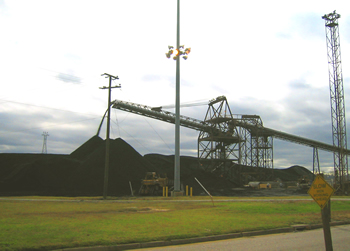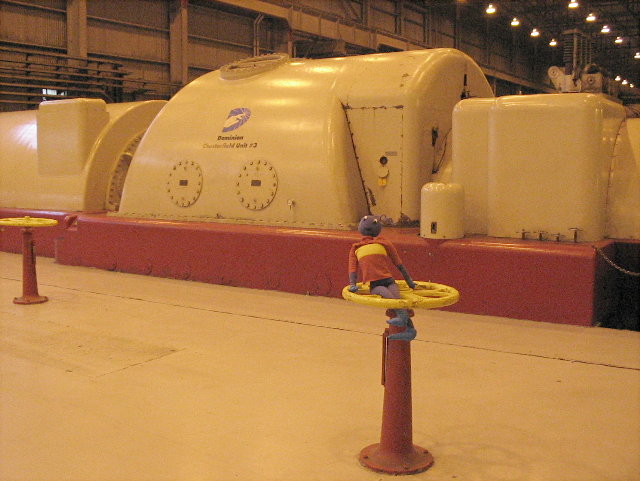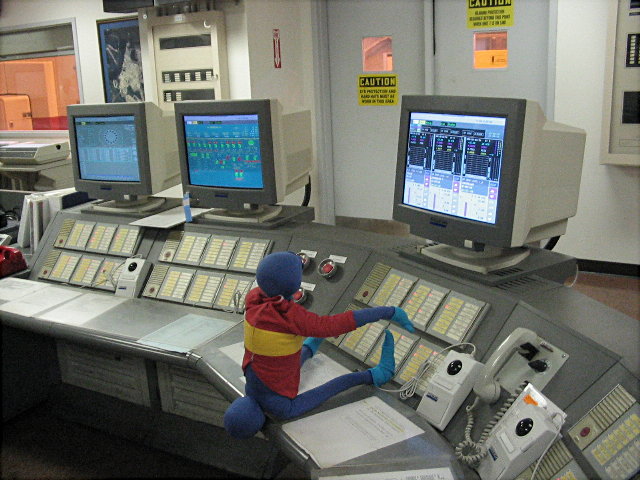A Report from Energy Ant—My Trip to a Coal-fired Power Station in Chesterfield, Virginia


Energy Ant here at Dominion's Chesterfield Power Station in Chester, Virginia. Today, we get to see two different types of electricity generation at work. At Chesterfield, they use coal to make electricity 24 hours a day, seven days a week, and when people use more electricity at home and at work, Chesterfield runs a different part of the power plant on either natural gas or fuel oil.
As we drive up, we can see the first step in making electricity from coal. Trains bring in the coal. Each day, railroad cars pull into Chesterfield carrying coal chunks about the size of golf balls. The power plant can store up to 900,000 tons of coal. Each day they burn 8,400 tons but can use as much as 13,000 tons on a day when we are using a lot of electricity.
Giant machines lift up the railroad cars and dump the coal on the large pile that they store at the plant. This pile has enough coal in it to run the plant for almost two months. But they keep adding more everyday since they are always using coal to make electricity.
The coal is taken off the pile on long conveyor belts to a Pulverizer. This machine crushes the coal into a powder. The coal burns more efficiently in this form. Big fans blow this coal powder into the boiler.
Here the coal is burned. Inside the boiler there are thick metal tubes that hold water. The water in these tubes has to be very pure, or the tubes might break. The fire inside the boiler can reach up to 3,000 degrees! Now that's hot. Hot enough to melt iron! With the fire burning all around, the water in the tubes turns to steam. The steam contains lots of energy. To get the energy out of the steam, it is sent through big turbines. These turbines are like giant fans that are turned by the rushing steam. After the steam gives up all its useful energy to the turbines, it is moved to a condenser where the steam is cooled down and turned back into water. This water moves back to the boiler to be sent through the same cycle again and again. See a flowchart!
What about the turbines? The turbines are just the next step in making electricity. These turbines turn a shaft. Connected to this same shaft are coils of wires. These coils spin at 3,600 cycles per minute between huge magnets. This is what actually generates the electricity. The electricity is sent out on high voltage power lines toward our homes.


When the coal is burned, there is ash that floats up. This pollution is controlled by an electrostatic precipitator. This machine takes 99.7% of the ash out of the air. The ash is mixed with water so it can be piped to big ponds. Doing this gets the ash out of the way. There the ash settles to the bottom, gets scooped out, given to construction companies, and used to build the roads we drive on. Well, the roads you all drive on, but not me, because ants don’t drive! Chesterfield Power Station is also the home to two natural gas/ oil boilers. We found out that these boilers work a lot like the coal boilers do. They bring in either natural gas or oil that is burned and heats water to make steam the same way the coal fired boilers do. The steam goes to turbines too, turning them to make electricity. The natural gas/oil part of the plant also uses something called a combined turbine. The hot gas that is let out by burning the fuel, instead of being lost to the atmosphere, is sent through a heat recovery steam generator, or HRSG for short, where it is used to heat more water. The water that is boiled in the HRSG is also sent through the turbines. Using this technology allows more of the heat energy in the fuel to be used to make electricity.
As big as it is, the whole power plant is run from just three rooms. Each room controls two units. The control room has one Control Room Operator and an assistant who use computers for all the controls. These control rooms keep watch over the whole process. The operators can turn each unit on and off, adjust fuel, adjust steam flow, and make sure there are no problems with the machines. There is a team of controllers in the control room twenty-four hours a day, everyday.


